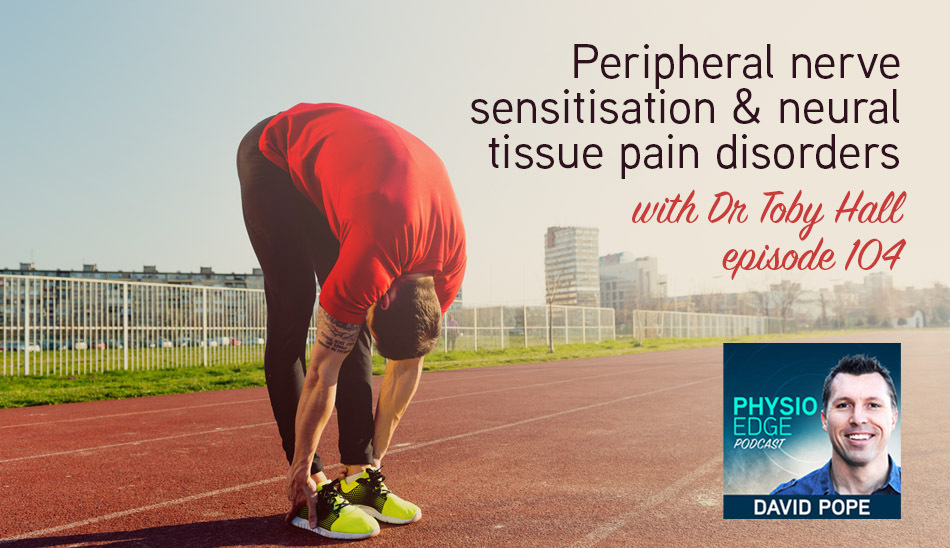
How can you identify the source of your patients leg, shoulder or arm pain? Is it from neural tissue compression, sensitisation or irritation or nearby joints, tendons or muscles? What questions and objective tests will help you diagnose a neural tissue pain disorder (NTPD)?
In this podcast with Dr Toby Hall (Specialist Musculoskeletal Physiotherapist, FACP, PhD), you’ll discover:
- Three types of neural tissue pain disorders, and how to identify each one
- What is Peripheral nerve sensitisation (PNS)?
- What clues in your subjective examination will help you identify PNS?
- Why do nerves become inflamed or irritated?
- How to identify & differentiate radiculopathy and radicular pain in patients with radiating limb pain.
- Do all patients with NTPD have obvious neuro symptoms such as pins and needles, numbness or weakness?
- Quick screening tests you can use in your assessment to identify PNS.
- How to identify if your patients shoulder and arm pain is from neural tissue or from local shoulder structures.
- How to diagnose a NTPD in patients with hip or leg pain.
- How to perform passive neurodynamic tests such as the straight leg raise (SLR), upper limb neurodynamic test (ULNT), slump test and femoral nerve slump test.
- What information does a positive or negative neurodynamic test provide?
- Can we identify the location of a nerve lesion or irritation with our passive neurodynamic tests or palpation?
- Initial PNS treatment options
- Is exercise helpful or harmful in patients with PNS?
- How can you palpate over neural tissue, and what information does this provide?
- Do opioids provide pain relief, or prolong recovery in patients with NTPD?
This podcast is the first part in a two part series on neural tissue pain disorders with Dr Toby Hall. Part 1 (this podcast) guides you through the types of NTPD, and how to assess and diagnose NTPD. Part 2 (available soon) will take you through how to treat PNS.
I highly recommend listening to this episode (part 1) prior to part 2, to have a thorough understanding of when and how to treat PNS.
CLICK HERE to get access to Sherlock Holmes and the sign of the four hypotheses with Nick Kendrick
Links associated with this episode:
- Download and subscribe to the podcast on iTunes
- Download the podcast now using the best podcast app currently in existence - Overcast
- Listen to the podcast on Spotify
- Sherlock Holmes & the Sign of the Four Hypotheses case study with Nick Kendrick
- Comprehensive, practical training to improve your skills, clinical reasoning, treatment results & confidence with a free trial Clinical Edge membership
- Dr Toby Hall on Twitter
- Manual Concepts
- Free online conference with Toby Hall & other presenters
- Dr Annina Schmid
- Let David know what you liked about this podcast on Twitter
- Review the podcast on iTunes
- Join live Q&A podcasts on Facebook
- Infographics by Clinical Edge




